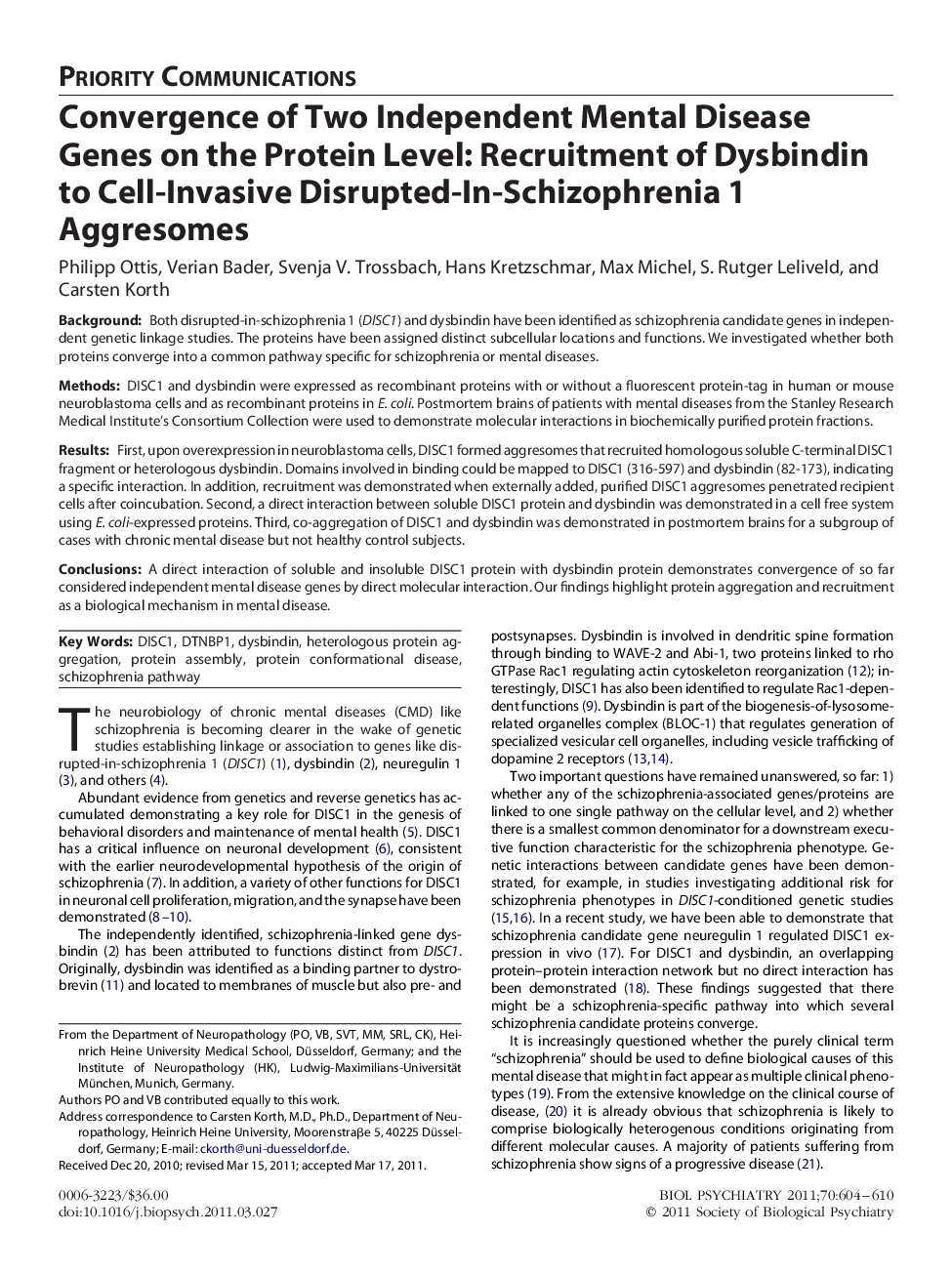| Article ID | Journal | Published Year | Pages | File Type |
|---|---|---|---|---|
| 4179281 | Biological Psychiatry | 2011 | 7 Pages |
BackgroundBoth disrupted-in-schizophrenia 1 (DISC1) and dysbindin have been identified as schizophrenia candidate genes in independent genetic linkage studies. The proteins have been assigned distinct subcellular locations and functions. We investigated whether both proteins converge into a common pathway specific for schizophrenia or mental diseases.MethodsDISC1 and dysbindin were expressed as recombinant proteins with or without a fluorescent protein-tag in human or mouse neuroblastoma cells and as recombinant proteins in E. coli. Postmortem brains of patients with mental diseases from the Stanley Research Medical Institute's Consortium Collection were used to demonstrate molecular interactions in biochemically purified protein fractions.ResultsFirst, upon overexpression in neuroblastoma cells, DISC1 formed aggresomes that recruited homologous soluble C-terminal DISC1 fragment or heterologous dysbindin. Domains involved in binding could be mapped to DISC1 (316-597) and dysbindin (82-173), indicating a specific interaction. In addition, recruitment was demonstrated when externally added, purified DISC1 aggresomes penetrated recipient cells after coincubation. Second, a direct interaction between soluble DISC1 protein and dysbindin was demonstrated in a cell free system using E. coli-expressed proteins. Third, co-aggregation of DISC1 and dysbindin was demonstrated in postmortem brains for a subgroup of cases with chronic mental disease but not healthy control subjects.ConclusionsA direct interaction of soluble and insoluble DISC1 protein with dysbindin protein demonstrates convergence of so far considered independent mental disease genes by direct molecular interaction. Our findings highlight protein aggregation and recruitment as a biological mechanism in mental disease.
